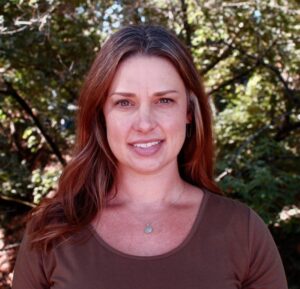Tillage Impacts on Soil Health and Water Retention
Written by Keith Abeles, Soil and Water Specialist
Summary of a Sonoma Valley Vineyard Field Trial
There is spirited, ongoing debate on how to best manage tillage in vineyard tractor rows. Proponents and practitioners of full till, no till or alternate row tillage all make good arguments, often with great passion. The “best tillage” for a site might depend on soil, slope, or management needs, but pertinent questions remain:
- What is the best management to retain moisture in the soil?
- Can water be conserved through a specific type of tillage management?
- Which management is the best for soil health and ultimately grape production and quality?
Proponents of tillage see it as a necessary tool to diminish competition for water and nutrients, and to control weeds. Those who favor no till argue that it improves soil structure and increases organic matter, which improves soil health and water retention. Many argue that alternate row management provides the best intermediary solution – a tilled row to manage inputs and fertility and a non- tilled row to access vines in winter and spring, and reduce impacts and costs associated with tillage. With these questions and considerations in mind, and a desire to get more answers based on data versus observation, or a growers’ sense of what is best management, the Sonoma RCD secured a NRCS grant in 2016 to do a field trial at a working vineyard in Kenwood. We partnered with John MacLeod of MacLeod Family Vineyards, who shared interest in these questions as a long-time grower and retired environmental geologist. Soil scientist Dr. Josh Beniston, head of the Santa Rosa Junior College (SRJC) Sustainable Agriculture program, was brought on board as the project scientist. Dr. Mark Greenspan, President of Advanced Viticulture, joined the effort as a consultant assisting with soil moisture tracking and analysis.
In late December 2016, we walked the MacLeod vineyards and Dr. Beniston identified a suitable portion of the ranch with relatively uniform soil and slope. We designed a field study, creating 9 plots in close proximity within a head trained zinfandel block. Each plot consisted of a 100-foot stretch that encompassed one vinerow and two adjacent tractor rows. Each type of tillage (full till, no till, and alternate row till) was repeated across 3 plots to make 9 total plots in the study area. The rough, gravely, volcanic soil at the site was determined to be a Laniger loam soil series.
Soils were sampled in spring of 2017 to measure properties useful for gauging soil health: soil texture, carbon content, soil organic matter, active carbon, bulk density and wet aggregate stability. In each plot, samples were taken at the 0-10 cm (0-4”) and 10-20 cm (4-8”) depths within the tractor row on both sides of the vinerow. Samples were taken from the middle of the tractor rows to avoid the area where tractor wheels compact the soil. Each sample was a composite of 3-4 subsamples taken across each plot. They were sent to the Oregon State University Soil Lab for analysis, while bulk density was measured at SRJC. These lab results provided a baseline for comparison of data from the 2019 soil sampling, which followed two and a half years of maintaining the tillage treatments.
In fall 2017, the tillage treatments were officially implemented using a standard wheel disc. LeBallister’s OSB Plowdown mix was seeded in tilled areas of the plots at a 50# per acre rate. Resident vegetation was allowed to grow in untilled rows. Each plot was managed in its designated tillage regime for the duration of the trial, through fall 2019, with standard mowing in winter and spring, and tillage in spring and fall. Alternate rows were flipped each spring. The OSB plowdown mix was planted again in tilled areas in fall of 2018 at 50# per acre.
In December of 2017, Aquacheck soil probes were installed in the center of the vinerows in all plots, allowing us to track relative moisture levels in 8” intervals every 30 minutes. Probes went to a depth of 2.5-4 feet deep, depending on the depth of the soil in the plot. Every 2-4 weeks, the moisture data was recorded with a field logger and uploaded to the Aquacheck web software. This allowed us to graphically view the data in a comprehensible format.
Plots were maintained as specified for the study through fall 2019, when we repeated the soil sampling.
What did we find?
Soil Analysis
Analyzing soil sampling results, 2 tests showed statistically significant differences: soil carbon content and wet aggregate stability. Total carbon (which is half of soil organic matter levels) measured 13% higher in the no till plots versus the tilled plots in the top 4 inches. It was 2.33% for no till, 2.02% for tilled, and 2.25% for alternate row tillage plots. Total carbon at the 4 to 8 inch (10-20 cm) depth did not demonstrate measurable differences across tillage treatments.
Wet aggregate stability is a laboratory measurement that looks at the ability of the soil’s structure or aggregates to hold together under a heavy rainfall event. Full tillage reduced wet aggregate stability (WAS) by 24% at the 0-4 inch depth. No till measured 18.5% total WAS, tilled plots were 14.1% and alternate row measured 19.8%.
It is important to note that tests only reflected 2.5 years of specific tillage management approaches, which is a very short time period for seeing changes in soils. Changes in management are more likely to be seen in a 5-10 year timeframe, and longer is better. While it would be good to have more time, these results reflect a somewhat significant difference over a relatively short time frame.
Other soil tests did not demonstrate a clear difference among the different tillage treatments. Active carbon is a measure of the readily available carbon for plant and organism consumption. Bulk density reflects the amount of pore space and compaction in soil. Measured soil properties were used to estimate the plant available water holding capacity of the soil using a USDA hydrology model. None of the results for these soil health parameters demonstrated significant differences from impacts of the three tillage management practices during the study in the top 8” of soil.
The most notable result from our soil analysis is that we saw a 13% difference in soil carbon after a relatively short timeline (2.5 years). Dr. Beniston points out that the soil carbon also provided the most consistent measurements of different soil health parameters tested in this study. The results also suggest that alternate row management aligns closer to no till (than full tillage) in its ability to sustain soil health. Ideally, we would have more repetitions of each management approach and more time to gain additional insights on management implications for soil health, but our initial results suggest that soil health and soil carbon were better supported by no till and alternate row management, compared with full tillage.
Soil Moisture Analysis
A commonly quoted statistic is that each 1% increase in organic matter in the soil increases water retention by an additional 20,000 gallons/acre to 27,154 gallons/acre (1 acre inch). Did we see greater water retention in the no till or reduced till plots? To answer this, Dr. Greenspan analyzed the massive data set of soil moisture readings to determine average depletion rates of soil moisture for the different tillage management regimes. He focused on the spring/early summer moisture drawdown rates at the 1 and 2 foot (30 and 60 cm) levels. This is the time when growers decide when to start irrigating, or not, and those decisions have the greatest potential for water conservation. It is also the time in the North Coast when rain-fed moisture is being depleted before being supplemented by irrigation, and the cover crop is most active, and therefore, influential on soil moisture levels. The spring/early summer drawdown provided the most meaningful and clear data to analyze, especially in 2019. The summary of this analysis is below, with the cells highlighted in green reflecting the lowest, most favorable depletion rates.
Depletion rates (in percent relative water content per day) for three treatments, averaged across three plots each and over two time periods for each year. The lowest of the depletion rates for each time period are shaded in green.
While the results didn’t show statistically significant differences, some trends can be observed with some notable differences at the one and two foot levels. The full till plots showed a higher level of water loss in the upper foot (0-30 cm) but lower in the deeper foot (30-60 cm) than no till plots. Conversely, the no till plots had lower water loss in the upper foot and greater water loss in the lower foot than full till. While this field study did not provide enough clear data to make a decisive conclusion about this question, Dr. Greenspan thinks the disturbance of tilling in the upper foot creates increased evaporation in this zone. However, it also disrupts or fills in the evaporation channels in the lower foot. Thus, tilled areas retained more water at the lower foot, though the differences were not significant.
The alternate row managed plots behaved somewhere in between the tilled and untilled plots. In early spring, alternate row plots lined up closer to full till in the upper foot and somewhere in between full till and no till in the lower foot. In later spring, the alternate till plots behaved more like no till in the upper foot and full till in the lower foot.
Looking at both years and depths combined, we do not see much difference in soil moisture depletion rates between the treatments.
While it would be nice to see more conclusive data, it is hard to expect that in the short time span of a 2.5 year field trial. That said, it is important to point out that this study helps illuminate the potential for reducing or eliminating tillage. If a grower is interested in diminishing tilling, the trial shows us this can be done without negatively impacting water availability to the vines. A producer can gain the benefits of increased organic matter, structure and soil health, as well as reduced time and money for labor and equipment, without having to necessarily sacrifice water availability for the vines. Our results are consistent with the long-term studies conducted by Dr. Patricia Skinkis in the Willamette Valley of Oregon. She found that different tillage management systems can have ranging impacts on nitrogen uptake, but not on soil moisture levels.
There is still much to be learned on the impacts and values of different tillage management systems. The Sonoma RCD has a related ongoing trial on a larger scale at Jackson Family Wines’ Saralee’s Vineyard in Windsor. Other trials are also taking place as part of the North Coast Soil Hub regional effort. To get more details and see our March 13, 2020 Vineyard Soil Health Symposium presentation on the field trial (as well as a talk by Dr. Skinkis), visit the Sonoma RCD website here. You can learn more about soil health, upcoming events, and the North Coast Soil Hub initiative at soilhub.org. You can also contact the project lead Keith Abeles at kabeles@sonomarcd.org





































